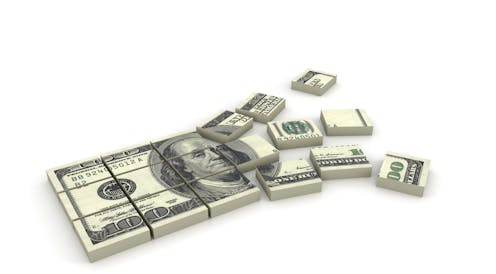What's the charitable deduction? An economist explains
Giving $100 to a favorite charity costs less than that for the roughly 8.5% of Americans who use this tax break.

The charitable deduction is a dollar-for-dollar reduction in taxable income that lowers what someone owes the Internal Revenue Service. Only donations to tax-exempt charities count.
This giving incentive is available only for the 10% of American taxpayers who itemize their tax returns. Taxpayers who itemize can sum up certain expenses, such as the interest they pay to for a home mortgage, and then subtract that money from their taxable income.
Here’s a hypothetical example: Clara Doe, a veterinarian, pays a 32% marginal tax rate on her US$200,000 income as a single filer. Because she itemizes, her $100 annual donation to a local food pantry costs her $68 after taxes. Uncle Sam essentially pays the rest by giving her a tax break.
Most Americans instead use the standard deduction, a set amount of money based on how you file your taxes. As as of 2021, the standard deduction was $12,550 for single taxpayers. People claiming it subtract that amount from their income to see how much of it is subject to the income tax. The standard deduction usually saves more money than itemizing.
With the standard deduction, giving $100 costs, well, $100.

Why the charitable deduction matters
People give to charities for many reasons. Tax breaks cannot be the main one because giving money away doesn’t make you better off financially.
As is true elsewhere, Americans tend to donate more with government incentives. Similarly, donors usually give away smaller shares of their income when Uncle Sam scales back those advantages.
Consider what happened once the 2017 tax reform package took effect. Many economists predicted beforehand that its reduction in giving incentives would prompt American taxpayers to give less to charity. And that did happen in 2018.
Although charitable giving has since rebounded, reaching new records, I believe the total could have been higher if more Americans could deduct charitable contributions from their taxable income.
How many Americans claim the charitable deduction?
In 2019, only an estimated 8.5% of taxpayers took advantage of this century-old tax break. Nearly three times as many Americans were claiming this deduction before the 2017 tax reforms.
There’s a simple explanation for this decline: The tax package nearly doubled the standard deduction. Most people who were itemizing until 2018 are now better off if they take the standard deduction instead.
That could change after 2025, when many of the 2017 tax reforms will expire.
The Conversation U.S. publishes short, accessible explanations of newsworthy subjects by academics in their areas of expertise.
Patrick Rooney receives funding from several different foundations and charitable organizations and serves or has served on several charitable boards or advisory committees. None of them stand to gain from this essay and none have directly fundeed this effort.
Read These Next
Billionaires with $1 salaries – and other legal tax dodges the ultrawealthy use to keep their riches
The richest Americans can largely avoid paying income and other taxes. A new book explains the history.
The US already faces a health care workforce shortage – immigration policy could make it worse
About 1 in 4 doctors practicing in the US were born abroad.
Unpaid caregiving work can feel small and personal, but that doesn’t take away its ethical value
Debating whether to step back from a career to take on caregiving responsibilities can be a tough decision…





